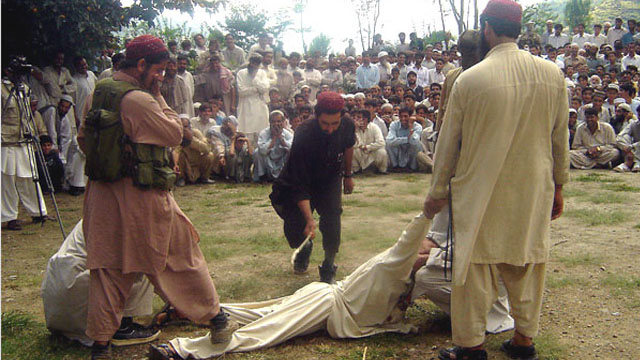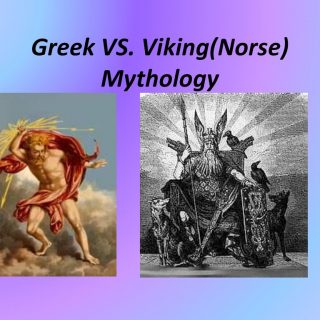In and out of the Pakistani Taliban Movement, or Tehrik-i-Taliban Pakistan.
Who are the Pakistani Taliban?
The Pakistani Taliban Movement, or Tehrik-i-Taliban Pakistan, is an umbrella organization slackly joining up to 30 groups of Pakistani terrorists all along the tribal areas adjoining Afghanistan. Its headquarters, although, is in North and South Waziristan, the jihadist centre at the western end of the tribal belt, where it was officially established in 2007 by a well-known Pashtun commander, Baitullah Meshud.
Several Pakistani Taliban commanders had battled in Afghanistan as part of the movement that brushed to power in Kabul. When American armed forces overthrew that movement in 2001, many of its leaders escaped across the border into Pakistan. The Pakistanis among them acted host to their Afghan counterparts — in addition to hundreds of rebels from Al Qaeda — offering them with refuge, logistical backing and employments.
The Afghan Taliban and Qaeda rebels gradually radicalized the tribal regions, persuading the Pakistani Taliban to widen their power across the hilly region and further than into Pakistan’s established areas and main cities.
The radical groups opposed the Pakistani military’s attempts to enforce control. They at times obliged in cease-fire agreements with the Pakistani military and then broke the promise months later. After Mehsud formed Tehrik-i-Taliban, he escorted the group in attacks against the Pakistani state, hitting military and civilian targets in diverse cities. The group indicted the Pakistani government of supporting the United States in its fight against terror, and swore vengeance for the slaughter of Pakistani civilians in the 2006 bombing of a madrasa in North-West Frontier Province, which was renamed Khyber-Pakhtunkhwa in 2010, and in the Red Mosque siege in Islamabad in 2007.
The United States designated the Pakistani Taliban as a militant group in September 2010 and placed a $5 million prize for information resulting in the arrest of their top leader, Hakimullah Mehsud.
Q. Who was Hakimullah Mehsud and what does his demise imply for the Pakistani Taliban?
Hakimullah Mehsud happened to the chief of the Pakistani Taliban after an American drone strike killed Baitullah Mehsud in August 2009. A onetime driver for the Taliban who had gained eminence through a succession of bold attacks, he played a crucial role in the embarrassing abduction of 250 Pakistani soldiers in 2007. He later stole American jeeps as they were being transported to Afghanistan and was filmed driving around in one.
Mehsud demonstrated an unruly, cruel head. He came into view at the execution of a former Pakistani intelligence official, Sultan Amir, known as Colonel Imam, in 2011. Colonel Imam had long been a guide and adviser to the Taliban in Afghanistan and Pakistan, still Mehsud overlooked endeavours to intervene on his part by senior Taliban figures, including Mullah Mohammad Omar, the Afghan Taliban leader, and Sirajuddin Haqqani, the leader of the powerful Haqqani network.
Searched by American drones, Mehsud accepted a low profile in current months and was hardly ever seen in the news media. But in an interview to an international media group that was transmitted in October, he pledged to carry on his movement of violence. He was alert that the C.I.A. was in the hunt for killing him, he said, “Don’t be afraid. We all have to die someday.”
According to media reports, Mehsud’s second-in-command, Abdullah Behar, was amongst the four people who were killed with him and it was not sure who may succeed him. Behar had just taken charge for the deputy position from Latif Mehsud, a militant commander who was arrested by the American forces in Afghanistan last month.
Q. Which are the most major strikes claimed by Pakistani Taliban?
Under the headship of Baitullah Mehsud, the Pakistani Taliban and associated rebel factions vented a chain of devastating bomb blasts in Pakistan’s cities. They attacked Pakistani military and intelligence targets. They were also at the rear of the deadly bomb blasts on softer targets like the Marriott Hotel in Islamabad in September 2008 and the Pearl Continental Hotel in Peshawar in 2009.
Baitullah Mehsud is also considered to have been at the rear of the suicide bombing that killed former Prime Minister Benazir Bhutto in December 2007.
In the leadership of Hakimullah Mehsud, the faction showed a close association with Al Qaeda. He claimed a role in the suicide bombing by a Jordanian double agent that killed seven C.I.A. officials in eastern Afghanistan in December 2009, ascended in settling of scores for the killing of Beitullah Mehsud.
The bomber, Humam Khalil Abu Mulal al-Balawi, was employed by Jordanian intelligence and was being used with the aim to weaken Al Qaeda’s leadership based in Pakistan’s tribal regions. The Taliban distributed video footage screening Mehsud alongside the Jordanian before the bomber travelled from North Waziristan to Afghanistan to carry out the attack. Mehsud later prepared Faisal Shahzad, a Pakistani-American who attempted to set out a car bomb in Times Square in New York City in 2010.
This year, the Pakistani Taliban shot Malala Yousafzai, a Pakistani schoolgirl promoting the education of girls. Yousafzai travelled to New York to deliver speech at the United Nations and became an international representation of the group’s arbitrary violent behaviour and suppression of women and girls. She and her family have shifted to England, partly as the Pakistani Taliban have pledged to hit her again.
Q. What connection do the Pakistani Taliban have with the Afghan Taliban?
The group owes loyalty to the Afghan Taliban leader, Mullah Mohammed Omar, and lends a hand strongly with the Afghan movement in its rebellion in Afghanistan, offering men, logistics and rear bases for the Afghan Taliban. It has instructed and sent off hundreds of suicide bombers from Pakistan’s tribal areas into Afghanistan. The movement shares a close connection with the Haqqani network, the most hardcore segment of the Afghan Taliban functioning out of North Waziristan, which has been in the rear of constant suicide attacks. The Pakistani Taliban are usually seen to track the lead of the Haqqani network’s chief, Sirajuddin Haqqani. The two also help and give refuge for Qaeda operatives, including Al Qaeda’s head, Ayman al-Zawahiri. Pakistani intelligence, which has established relations with the Haqqani network, has desired to twist the Pakistani Taliban to battle Western forces in Afghanistan and stop from strikes against Pakistan.





